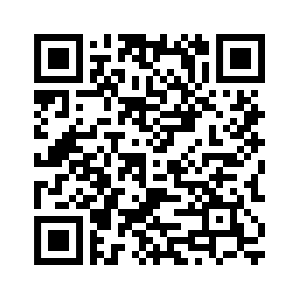Errors in the administration of intravenous medications in patients undergoing anesthesia in the operating room
Abstract
Errors in medication administration have affected the anesthetic practice over the time and have become a major cause of perioperative morbidity and mortality. Among different medical specialties, anesthesiology is perhaps the most likely to make mistakes in this procedure. This is because in many places around the world, a single professional "anesthesiologist" orders, prepares and administers a drug at one time and setting. For thirty years, Cooper disclosed the first reports of critical incidents and perioperative safety scheme, and in the 90s', Chopra performed a retrospective analysis, found that medication errors are the fourth most common that results in disability in 17% and death in 8%, these being preventable errors in 51% of cases. It’s essential for the safe practice of anesthesia to establish interventions for improving prevention programs, education, research and development, enabling break traditional paradigms, with the aim of making recommendations and standardize the safe administration of drugs in this field.Downloads
References
Lebron C, Bobby N. Medication Errors in Anesthesia: A Review. International Anesthesiology Clinics 2013; 51(1):1-12.
Stabile M, Webster CS, Merry AF. Medication Administration in Anesthesia: Time for a Paradigm Shift. Medication Administration in Anesthesia. Newsletter. Fall 2007; 22:44-47.
Hanna GM, Levine WC. Medication Safety in the Perioperative Setting. Anesthesiology Clinics 2011; 29:135-144.
Kothari D, Gupta S, Sharma C, Kothari S. Medication error in anaesthesia and critical care: A cause for concern. Indian Journal of Anaesthesia 2010; 54:187-92.
Orser BA, Chen RJ, Yee DA. Medication errors in anesthetic practice: a survey of 687 practitioners. Canadian Journal of Anaesthesiology 2001; 48:139-46.
Cooper JB, Newbower RS, Long CD, McPeek B. Preventable anesthesia mishaps: a study of human factors. Anesthesiology 1978; 49(6):399-406.
Cooper JB, Newbower RS, Kitz RJ. An analysis of major errors and equipment failures in anesthesia management: Considerations for prevention and detection. Anesthesiology 1984; 60:34-42.
Chopra V, Bovill JG, Spierdijk J. Accidents, near accidents and complications during anaesthesia. A retrospective analysis of a 10-year period in a teaching hospital. Anaesthesia 1990; 45:3-6.
Wilson RM, Runciman WB, Gibberd RW, Harrison BT, Newby L, Hamilton JD. The Quality in Australian Health Care Study. Med J Aust 1995; 163(9):458-71.
Merry AF, Peck DJ. Anaesthetists, errors in drug administration and the law. N Z MedJ 1995; 108:185-187.
Kohn LT, Corrigan JM, Donaldson MS. To err is human: Building a safer health system. Committee on the Quality of Health Care in America, Institute of Medicine. Washington DC: National Academy Press; 1999.
Leape LL, Berwick DM, Bates DW. What practices will most improve safety? Evidence-based medicine meets patient safety. JAMA 2002; 288:501-507.
Bowdle TA. Drug administration error from the ASA Closed Claims Project. ASA Newsl 2003; 67:11-13.
Webster CS, Merry AF, Larsson L, McGrath KA, Weller J. The frequency and nature of drug administration error during anaesthesia. Anaesth Intensive Care 2001; 29(5): 494-500.
Khan FA, Hoda MQ. Drug related critical incidents. Anaesthesia 2005; 60:48-52.
Yamamoto M, Ishikawa S, Makita K. Medication errors in anesthesia: An 8-year retrospective analysis at an urban university hospital. J Anesth 2008; 22:248-252.
Llewellyn RL, Gordon PC, Wheatcroft D, Lines D, Reed A, Butt AD, et al. Drug administration errors: A prospective survey from three South African teaching hospitals. Anaesth Intensive Care 2009; 37(1):93-8.
Cooper L, DiGiovanni N, Schultz L, Taylor AM, Nossaman B. Influences observed on incidence and reporting of medication errors in anesthesia. Can J Anaesth 2012; 59(6):562-70.
Hughes RG, Blegen MA. Patient Safety and Quality: An Evidence-Based Handbook for Nurses. In: Agency for Healthcare Research and Quality (US) 2008.
Merry AF, Webster CS, Hannam J, Mitchell SJ, Henderson R, Reid P, et al. Multimodal system designed to reduce errors in recording and administration of drugs in anaesthesia: Prospective randomised clinical evaluation. BMJ 2011; 343:d5543.
Suyderhoud JP. Joint Commission on Accreditation of Healthcare Organizations requirements and syringe labeling systems. Anesth Analg 2007; 104(1):242.
Eichhorn JH. APSF hosts medication safety conference: Consensus group defines challenges and opportunities for improved practice. In: APSF Newsletter. Vol. 25 2010; 1-20.
Jensen LS, Merry AF, Webster CS, Weller J, Larsson L. Evidence-based strategies for preventing drug administration errors during anaesthesia. Anaesthesia 2004; 59(5):493-504.












.png)



